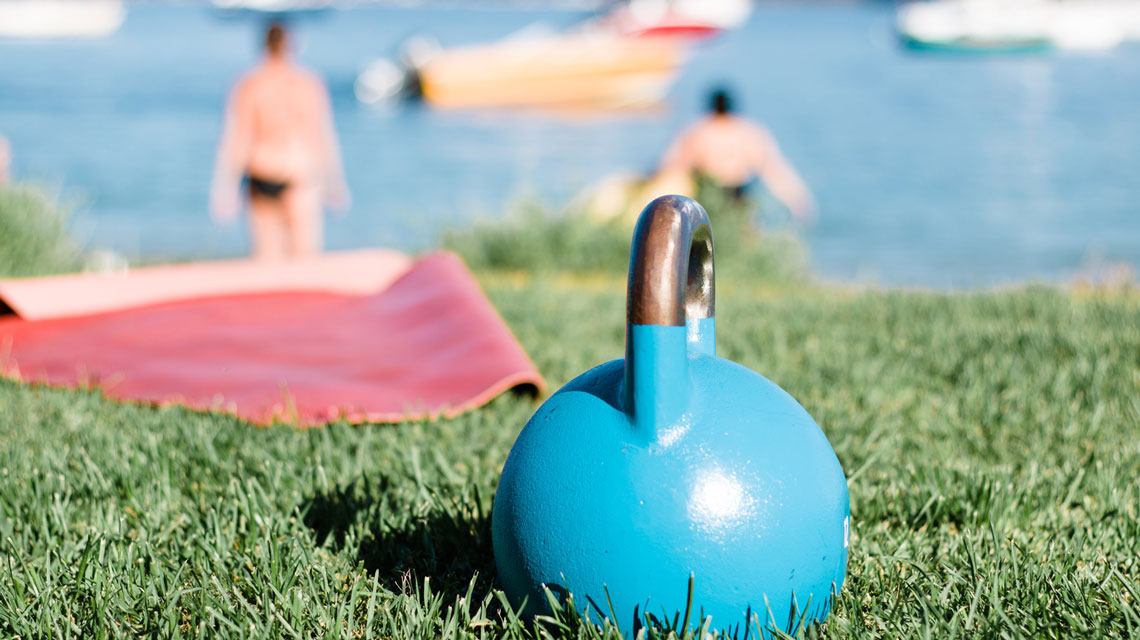
Holiday
Fitness
Minimising detraining with Tabata
April 27, 2017Minimising detraining with Tabata
April 27, 2017Have you ever returned to training after a holiday or training break, shocked with how unfit you feel? Somehow you scrape through the first session and then work for weeks fighting to get back on top of your fitness. Well, you are not alone.
Although rest is an important component of any training program, cutting out exercise completely can set your fitness back significantly.
The American College of Sports Medicine found that even as little as 2 weeks without exercise results in a significant decline in aerobic capacity. And that 2-8 months of being sedentary can result in a loss of virtually all fitness gains. Even the training-induced benefits of physical activity, like improvements in blood pressure, insulin sensitivity and cholesterol begin to vanish.
This effect is known as detraining.
After you experience the effects of detraining, it becomes clear that it would have been much easier (and far more enjoyable) to maintain your training and avoid the hefty climb back to your pre-holiday fitness.
The main principle underlying detraining is, ‘if you don’t use it, you lose it.’ The human body is highly efficient in dealing with external stress. This means that while the body can adapt to become stronger and faster, it can also become slower and weaker if stimulated by regular training. This may seem disheartening, however there is good news to come. If you have a high level of fitness and a history of consistent training, the detraining effect will be slower than those of low-to-moderate fitness levels. If you are new to the fitness game, training as little as 1-2 times per week can help maintain aerobic capacity and strength, therefore minimise detraining.
With this in mind, despite your fitness level, you need to be armed with an efficient, convenient and holiday-friendly training method.
I give you, Tabata training.
My mission is to motivate and inspire others to be the best version of themselves. To help people achieve their health and fitness goals and find balance in their lives to make the shift from feeling average to feeling awesome.
Tabata training is a form of High Intensity Interval Training (HIIT). It involves 8 rounds of 20 second maximal effort bouts, followed by 10 seconds of rest. The training style was born after Dr. Izumi Tabata and a team of researchers from the National Institute of Fitness and Sports in Tokyo compared the effects of moderate-intensity aerobic training vs. Tabata style HIIT.
Tabata came out on top.
These short, intense intervals were found to improve both aerobic and anaerobic capacity with workouts of 4 minutes a day, 5 times per week. The moderate-intensity aerobic training improved the aerobic system only and required each individual to train 60 minutes a day, 5 times per week.
The focus with this style of training is intensity, not volume. An effective Tabata training program is short duration and high-intensity. For the workout to be effective, the chosen exercises must be performed at maximal effort and be sprint-like activities.
It is important to remember that Tabata is not meant to be easy. If you aren’t pushing yourself really hard in those crucial 20-second intervals then the session won’t be effective. Tabata was not designed for muscular strength development, so steer clear of exercises like push ups and squats. These exercises make it hard to achieve maximal-effort and therefore don’t provide the benefits that are associated with Tabata training.
Save time. Go hard. And stick to cardiovascular exercises for the best results.
This equipment-free, time-saving training method is perfect for a holiday sweat session. So next time you pack your bags and head off abroad, arm yourself with the Tabata workout below to make sure you return home feeling fit and full of energy!
Happy travels.
Holiday Tabata Training: 20 minutes
20 seconds on / 10 seconds off
8 rounds / 1 minute rest between sets
1. Sprints
2. Burpees
3. Stair repeats
4. Alternating jump lunges


